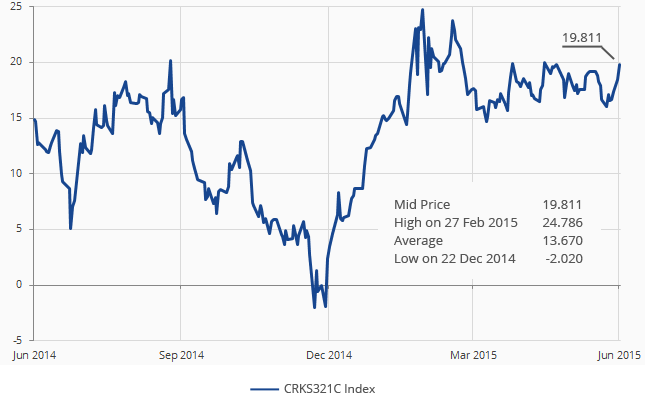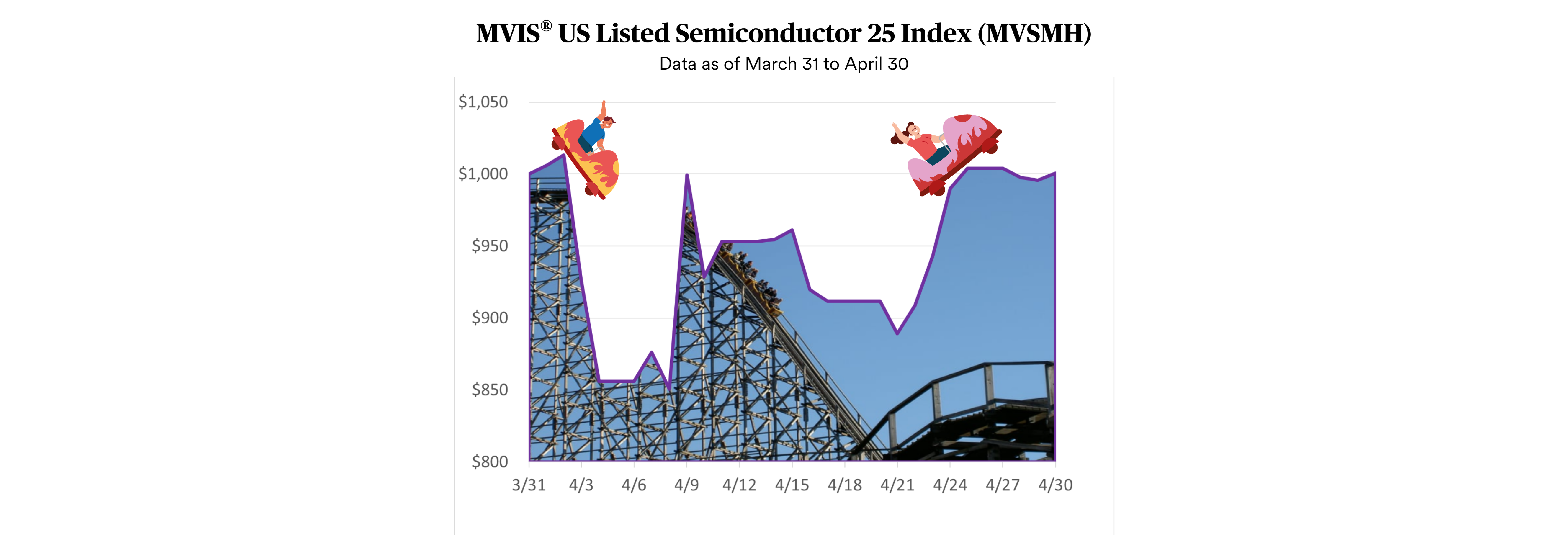Refiners «crack» crude oil and turn it into refined (petroleum) products. That is, they break up its long-chain hydrocarbons into hydrocarbons with shorter chains. If the price difference, or «spread», between the crude oil they refine and the refined products they produce is positive, then the process is profitable. If it's negative, the process is not profitable. The crack spread, then, represents a theoretical refining margin or an indicator of potential earnings.
However, since both input and, in particular, output, vary across refineries, the spread is, de facto, a proxy. One formula commonly used in the oil industry is the 3-2-1 crack spread. The basic assumption here is that from every three barrels of crude oil, refiners produce two barrels of gasoline and one barrel of distillate fuel (for example, gasoil or heating oil).
Bloomberg WTI Cushing Crude Oil 3-2-1 Crack Spread/U.S. Gulf Coast

Source: Bloomberg, Data as of 10 July 2015
Get the latest news & insights from MarketVector
Get the newsletterRelated:
About the Author:
Mr. Reynolds joined VanEck in 2005 as senior analyst focusing on energy, and currently serves as co-portfolio manager of Van Eck's natural resources strategies. Prior to joining Van Eck, he was employed at Petrie Parkman & Co. as an energy analyst covering U.S. oil and gas exploration and production companies. From 1991 to 2001, Mr. Reynolds covered North American, European and global energy companies out of New York, Australia and London with Goldman Sachs, Lehman Brothers, and Credit Suisse First Boston. Prior to his career in finance, Mr. Reynolds worked at Tenneco Oil Company from 1987 to 1989 as an exploration geologist.
Mr. Reynolds received a bachelor's degree in engineering from Cornell University in 1985, a master's degree in petroleum geology from the University of Texas, Austin in 1987 (Phi Kappa Phi), and an MBA in finance from the Columbia Business School in 1991 (Beta Gamma Sigma). In 2000, he was chosen as The Wall Street Journal's «Best on the Street» for E&P stock selection, and was recognized as «Best Up and Comer», E&P Sector, for Institutional Investor magazine's 1999 All-America Research Poll. Mr. Reynolds has also authored several technical geology articles published in periodicals such as the American Association of Petroleum Geologists.
The article above is an opinion of the author and does not necessarily reflect the opinion of MV Index Solutions or its affiliates.




